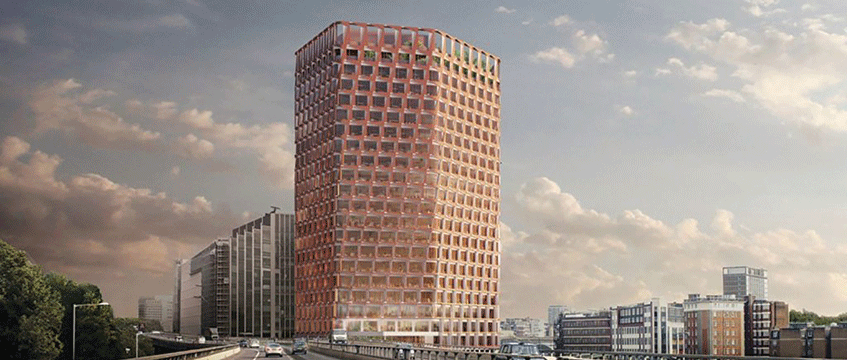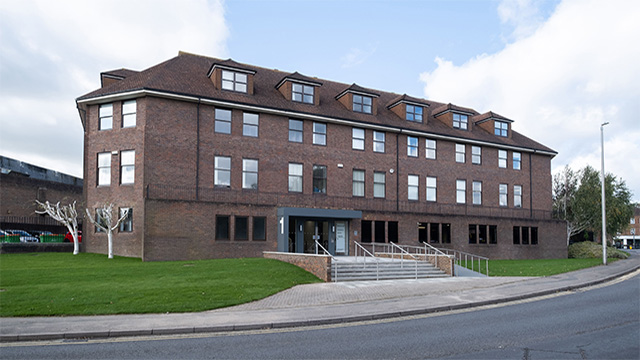London’s mayor approves British Land’s Paddington office scheme
Mayor of London Sadiq Khan has approved British Land’s revised plans for 5 Kingdom Street, W2, at its Paddington Central campus.
Khan said he agreed with the Greater London Authority’s planning officers that the scheme caused less than substantial harm to surrounding heritage assets and that the public benefits, including the affordable workspace provision and off-site affordable housing payment, outweighed this harm.
“The central London office market is constrained, and in Westminster the figures show a significant net loss… Every opportunity must be taken to increase the supply of office floor space, particularly in highly accessible, well-performing locations like Paddington,” he added at the public hearing.
Mayor of London Sadiq Khan has approved British Land’s revised plans for 5 Kingdom Street, W2, at its Paddington Central campus.
Khan said he agreed with the Greater London Authority’s planning officers that the scheme caused less than substantial harm to surrounding heritage assets and that the public benefits, including the affordable workspace provision and off-site affordable housing payment, outweighed this harm.
“The central London office market is constrained, and in Westminster the figures show a significant net loss… Every opportunity must be taken to increase the supply of office floor space, particularly in highly accessible, well-performing locations like Paddington,” he added at the public hearing.
“I recognise there will a shift in the way people work in the future as a result of the current pandemic… but at present, however, there is not enough evidence to demonstrate that demand for office space has reduced so significantly and drastically, or indeed permanently, as to indicate a lack of support for major new office developments in the central activity zone.”
Khan’s decision comes despite ongoing objections from Westminster City Council, Historic England, the Royal Parks and local residents over the height and massing of the proposed 19-storey office building.
The council had earlier this year refused planning permission for the scheme, which prompted the Greater London Authority to call it in for determination in April. British Land subsequently submitted revised proposals.
At the time of the call-in the GLA said: “Failure to promote development on sites such as this could potentially impact upon the economic health of the central activities zone, the Paddington opportunity area and London as a whole, as well as wider regeneration objectives for the opportunity area.”
Westminster City Council, Historic England and the Royal Parks re-objected to the revised scheme over its impact on multiple heritage sites – including the skylines at Hyde Park, Kensington Gardens, Regents Park and Primrose Hill – and on the Maida Vale and Bayswater conservation areas.
The plans, designed by Allies & Morrison, will deliver more than 519,000 sq ft of office space, 41,979 sq ft of affordable workspace, a 7,944 sq ft auditorium, a 17, 599 sq ft public garden with a café and bar, and 36,490 sq ft of flexible commercial, leisure and cultural space including a market hall, cinema and exhibition space.
British Land, as part of the revision of its proposals, also agreed to increase its affordable housing contribution from £1.75m to £14.3m.
Rupert Handley, area planning officer for Westminster City Council, admitted that the increased affordable housing funding and affordable workspace provision were public benefits, but argued that these did not outweigh the harm the council considered would be caused by the “unacceptable height, mass and location” of the scheme.
He added: “We haven’t been presented with a scheme with a number of public benefits to tip it over [to being acceptable].”
Concerns were also raised during the hearing about loss of light in Westbourne Terrace and Warwick Crescent, while local residents questioned whether there would be demand for such a large amount of office space following the coronavirus pandemic.
Michael Meadows, head of planning at British Land, told the public hearing that it was “far too early to say what the long-term impacts of the pandemic on London and the need for office space are going to be, but a huge part of our job is to think about the future of office space”.
He said that the tower had been designed to “create a thriving innovation ecosystem flexible enough to appeal to businesses of different types and sizes”, including the tech and life sciences sectors, and that to achieve everything British Land wanted to with a shorter building was not possible.
“We have designed a building that we recognise contrasts with the local townscape but is a landmark and will deliver ambitious benefits. The fact it will connect to north Paddington is a hugely important point.”
He added: “We recognise that the way in which people work is changing and will change in response to the pandemic and societal changes more generally. But we believe that demand for high-quality offices will remain, and that there is a need for high-quality offices to enable social connection, creation and collaboration, and to support employee learning and wellbeing. We feel confident in the future of the London office market.”
Both Handley and local residents at the public hearing admitted that Paddington was not in great shape compared with neighbouring areas such as King’s Cross and that its public realm needed investment.
“I’d like to see Paddington get its act together, but I don’t think building an oversized orange blob is the right way to achieve that,” said local resident Ed Allchin.
Meadows said the “warm terracotta” colour of the building “was the one we felt most appropriate as it picks up on local tones of brickwork and the treelines from the parks”.
To send feedback, e-mail louise.dransfield@egi.co.uk or tweet @DransfieldL or @estatesgazette
Photo © The Paddington Partnership











